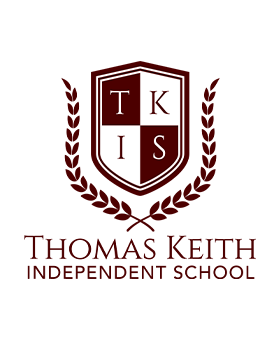
British Calendar Dates
Introduction To British Calendar Dates
British Calendar dates can be a source of confusion for many, especially those unfamiliar with the unique conventions used in the United Kingdom. Unlike American date formats, British dates use a day-month-year structure, which is one of the defining differences when communicating dates. This article provides an in-depth look at British dates, how they are used in British English, and practical examples of their application. We’ll discuss the history behind the format, differences in notation, and how Schools like the Thomas Keith Online Independent School utilise British date formats to ensure clarity and consistency.
What Are British Calendar Dates?
For example, the 1st of March 2026 would be written as 01/03/2026 in British English. This differs from the American format, which would write this date as 03/01/2026. This simple change can lead to misunderstandings if the context isn’t clear, especially in international communications.
![]()
Why Does The UK Use This Format?
The British Calendar Date format has historical roots, often believed to originate from the preference of stating the day before the month as a more logical way to express time, progressing from a smaller unit to a larger unit (day to month to year). Over time, this became the standard across Britain and its associated territories. The date format also reflects the cultural and linguistic preferences that have been ingrained within British society over centuries.
How Dates Are Written In British English
In British English, there are both formal and informal ways of writing dates. Here’s how they differ:
-
Formal Dates
-
For example:
- Monday, 1 March 2026 (the day is written without a leading zero, the month is in words, and there’s no comma before the year).
-
-
- The use of ‘st,’ ‘nd,’ ‘rd,’ or ‘th’ is optional but typically added in more formal or conversational contexts: e.g., 1st March 2026.
-
-
Informal Dates
-
- Informal dates are usually shorter and might look like 01/03/2026 or 1/3/26.
- This format is commonly used in notes, memos, and where space is limited, like calendar apps and text messages.

British Calendar Date Conventions In Different Contexts
The way British Calendar Dates are used depends on the context and audience. Here are some common settings where you’ll encounter British dates and their standard presentation:
1. Educational Institutions
In British schools and universities, dates are written in a way that reflects the formal structure described above. Schools like the Thomas Keith Online Independent School follow these conventions to maintain a clear and uniform approach to documentation. The Thomas Keith Online Independent School, known for its adherence to British traditions, follows these conventions across platforms, from announcements to official documents.
For example:
- An academic calendar entry might read: Monday, 15 September 2024.
- Assignments and projects are typically submitted with a formal British date format in headers or footers: 15/09/24 or 15th September 2024.
2. Official Documents And Correspondence
In official documents, the British date format is strictly adhered to. This includes:
- Legal documents
- Government correspondence
- Business contracts
For instance:
- A formal letter might include a date like: Thursday, 20 June 2025.
- Government records might write 5 January 2023 instead of 01/05/2023, which could be misinterpreted in the American format as May 1st.
3. Digital Platforms And Media
With globalisation, digital platforms sometimes present dates in the American format, even in British-based organisations. However, platforms tailored for a British audience will typically stick to the day-month-year format. Social media channels, UK-based websites, and news platforms (like the BBC) tend to use British dates to ensure clarity.
How Thomas Keith Online Independent School Incorporates British Calendar Dates Conventions
Thomas Keith Online Independent School is a great example of an institution that implements British date conventions consistently across its communications. On the school’s official website, all important dates—such as term start dates, exam schedules, and event calendars—follow the day-month-year format. This standardisation helps to avoid misunderstandings among international students who may be familiar with different date formats.
For example, a notification on the school’s portal might read:
- Exam Registration Deadline: 22nd March 2025
This clear and consistent use of British dates maintains clarity, especially in an international educational setting where students and parents come from diverse backgrounds.
Common Mistakes In British Calendar Dates
Misinterpretation of dates is common in international settings where British dates can be confused with American dates. Here are some of the most common mistakes and how to avoid them:
-
Misinterpreting Day And Month
-
-
- Mistaking 05/03/2024 for May 3rd instead of March 5th is a frequent error. When writing dates, use a combination of numbers and letters to avoid confusion (e.g., 5 March 2024).
-
-
Omitting The Year In Certain Situations
-
-
- It’s common to drop the year in casual contexts, but for formal or long-term events, always include the year to avoid confusion. Instead of writing 5 March, use 5 March 2024 for clarity.
-
-
Misusing Ordinal Indicators (st, nd, rd, th)
-
- Although these indicators (1st, 2nd, 3rd) are common in British English, they are not essential in formal documents. Using the 5th of March is correct but may look informal in official writing, where 5 March would be more appropriate.
Tips For Writing British Calendar Dates Correctly
To write dates in British English consistently and accurately, follow these tips:
- Use Day-Month-Year in Full: When writing dates in full, always start with the day, then month, and end with the year (e.g., 25 December 2024).
- Avoid Hyphens and Slashes in Formal Writing: For formal writing, always write out dates without slashes or hyphens (e.g., 1 January 2024).
- Add Context in International Communications: When communicating with an international audience, spell out the month to avoid ambiguity (e.g., 1st March 2024 instead of 01/03/24).
- Be consistent with ordinary indicators: While these aren’t necessary in formal documents, they can add clarity in conversational contexts.
![]()
Conclusion
Understanding British Calendar Dates and using them accurately is important for clear communication, especially when interacting within British contexts. Schools like the Thomas Keith Online Independent School use British dates to maintain consistency and prevent misinterpretations among a diverse body of students and parents. By following British conventions in both formal and informal settings, you can avoid confusion and ensure your dates are understood clearly.
FAQs
- Why does British English use the day-month-year format?
This format likely developed to list time from the smallest unit to the largest, which is seen as a logical progression. - How do I avoid confusion with American dates?
Always spell out the month when communicating with international audiences to avoid ambiguity (e.g., 3rd January 2024 instead of 03/01/24). - Is it correct to use ordinal numbers like 1st, 2nd, and 3rd?
Yes, it’s common in British English, especially in informal or conversational contexts. However, they are often omitted in formal documents. - What should I do if a platform defaults to American dates?
Many platforms allow you to change date settings to a British format. If not, use written dates in communications to avoid misinterpretation. - Does the Thomas Keith Online Independent School use the British date format?
Yes, the school consistently uses the day-month-year format in all its official communications, ensuring clarity for its British and international students alike.




